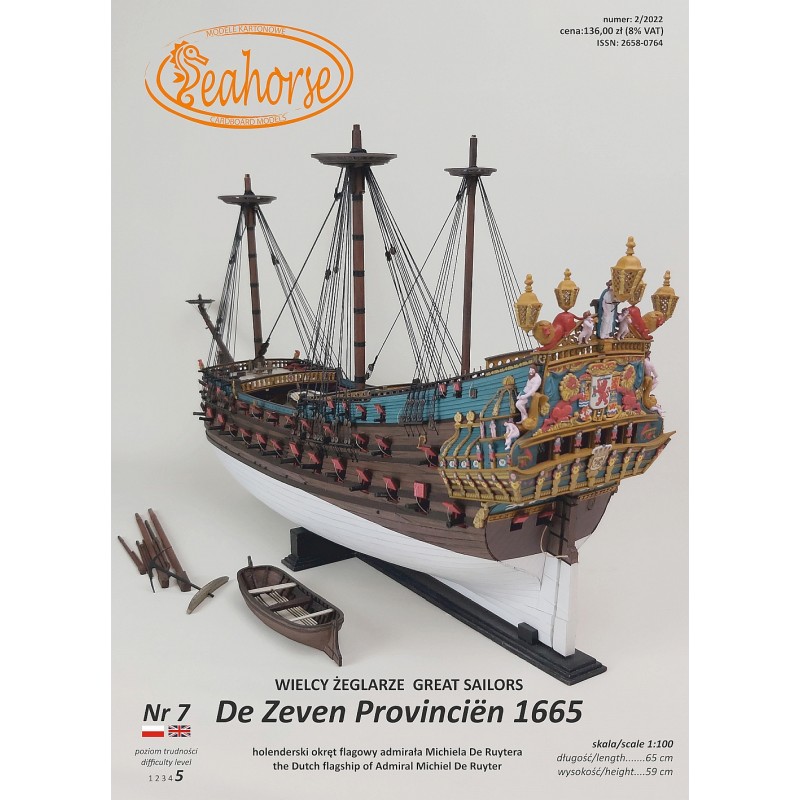











Author: T. Weremko
Scale: 1: 100
The model includes:
- 24 A4 pages of assembly drawings, construction description and templates
- 40 A4 pages of parts
Model dimensions after assembling:
length: 65 cm
height: 59 cm
The model is very difficult and intended for experienced modellers.
De 7 Provinciën was built in 1665 in Rotterdam as the new flagship for the famous Dutch admiral Michiel de Ruyter (1607-1767), who sailed it from 1666-1674. Its measurements were 163 x 43 x 16.5 Amsterdam feet ( 46.13 x 12.17 x 4.67 m), it carried 80 guns, its displacement was 1600 tons and there was a crew of 420 men aboard.
The name was chosen because of the seven counties that fought the 80-years war of liberation against the Spanish from 1568 to 1648. The united country had also freed itself from the Catholic Church and nobility and the name is a tribute to an organization, which proved its right of existence without a ruling king between 1649 and 1672. In that year stadtholder Willem III, Prince of Orange, the later king of England William III (1650-1702), returned to Holland.
The ship fought in the second (1665-1667) and third (1672-1674) Anglo-Dutch Wars and took part in the Four-Days Battle (1666), The Two-Days Battle (1666), the Chatham Raid (1667) , the Battle of Solebay (1672), the Battle of Schooneveld (1673) and the Battle of the Texel (1673). In 1674 the ship even visited the West-Indies. In 1692 she fought in the Battle of Barfleur and was broken up in 1694.
The lines of the model were reconstructed by Ab Hoving, Herbert Tomesen and drawn by Cor Emke in 2006. They were based on both contemporary Dutch shipbuilding literature and specification contracts of comparable ships of those days. Also earlier publications by G.C Dik and O. Blom were used in the new design. It was intended to rebuild the ship that was put on the stocks of the Bataviawerf in Lelystad, Holland, in 1996 which project appeared to fail in the beginning of this century. Though great progress was made in the first three years the revived project was stopped because of a lack of money.
Data sheet